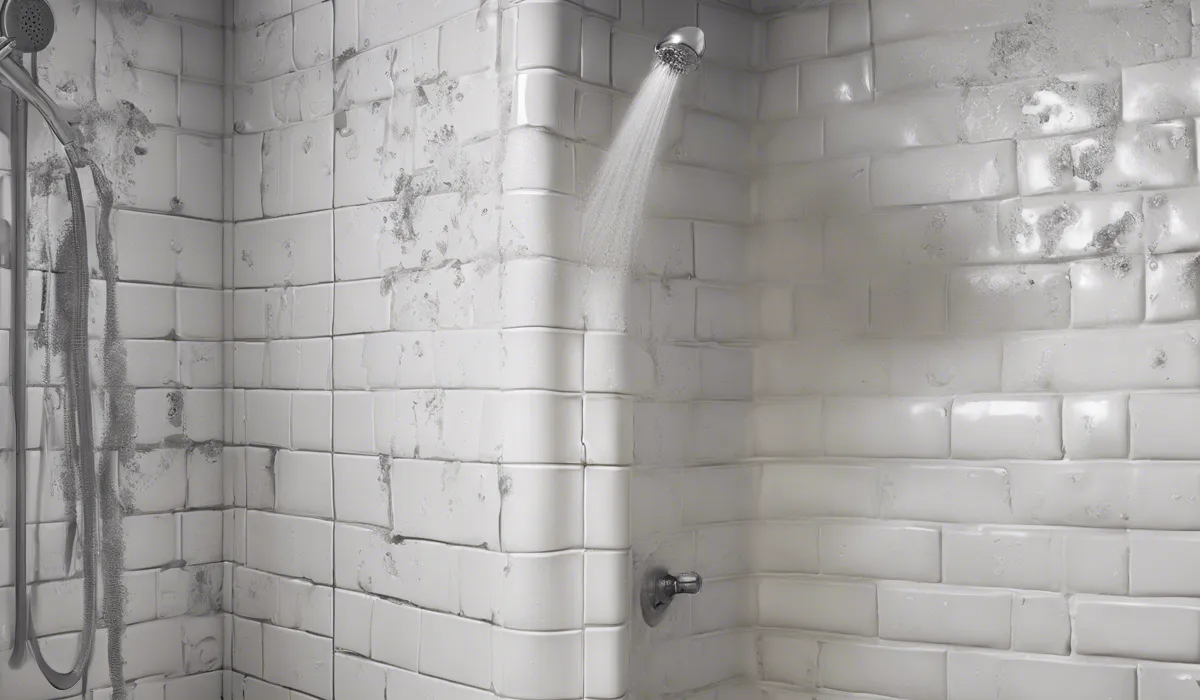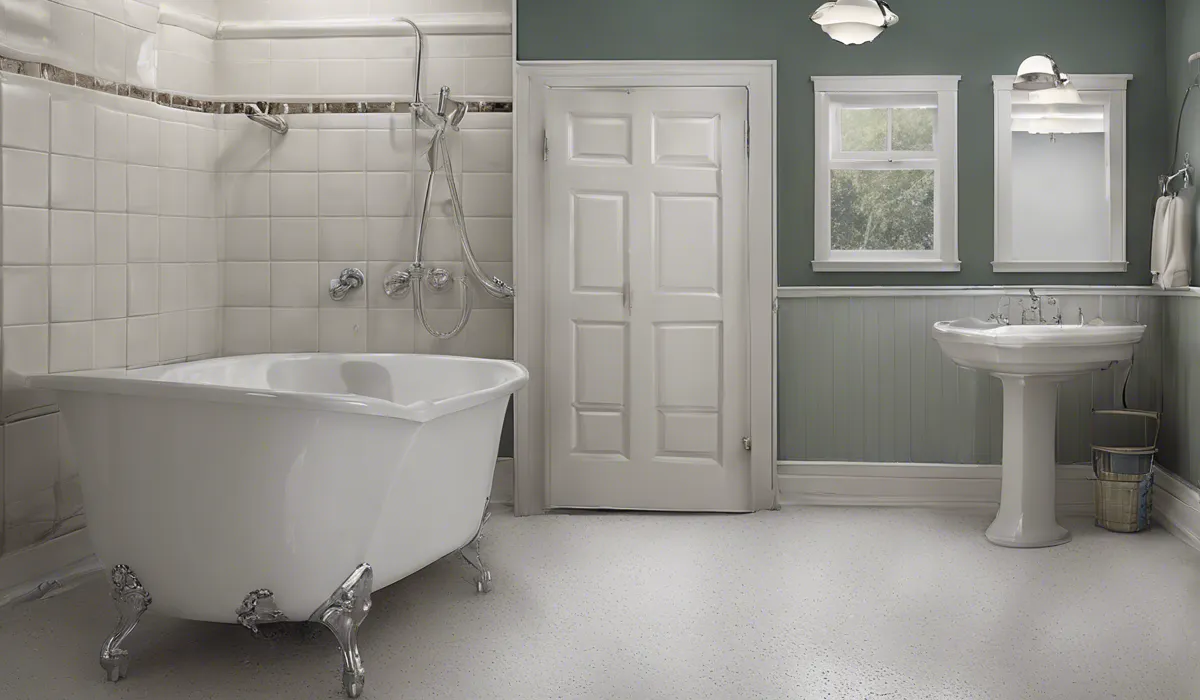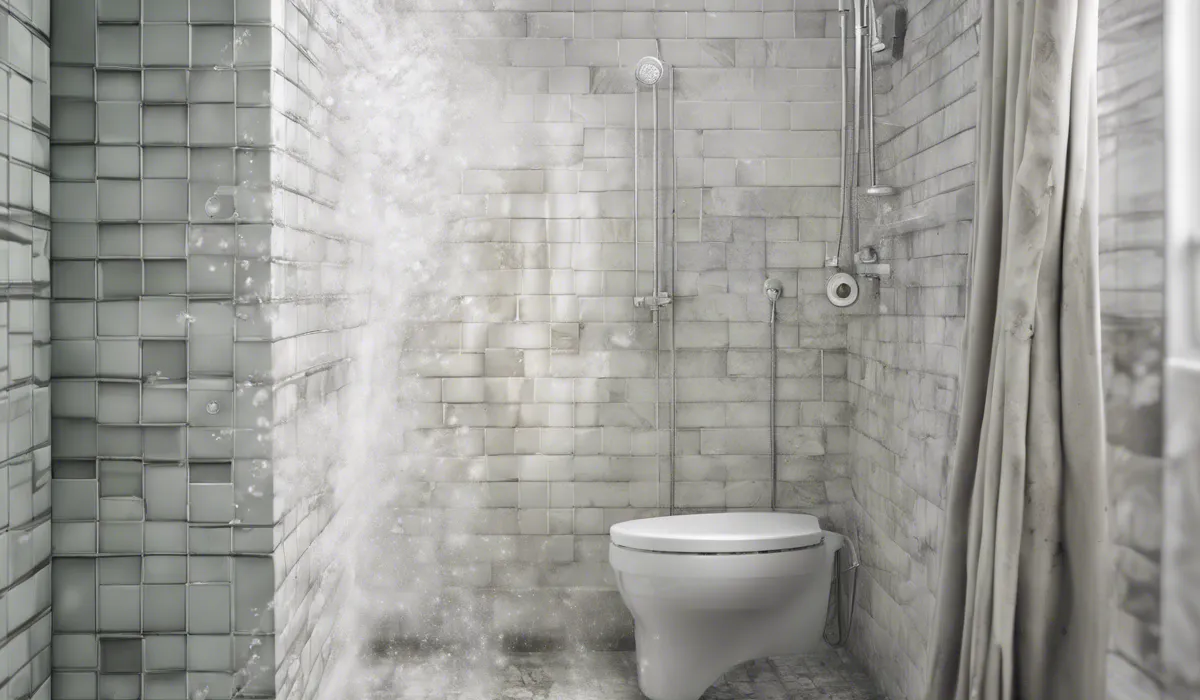To clean mold and mildew from a shower, mix equal parts white vinegar and water in a spray bottle. Apply generously to affected areas, let it sit for at least 30 minutes, then scrub with a brush and rinse. For tougher stains, use a paste of baking soda and water, apply, scrub, and rinse.
Understanding Mold and Mildew in the Shower

Explanation of What Mold and Mildew Are
Mold and mildew are types of fungi that thrive in moist environments. While they are similar, they are not the same.
Mold is usually black or green and can grow beneath surfaces, while mildew is typically white or gray and stays on the surface.
These fungi spread by releasing spores into the air, which can be harmful when inhaled.
Common Causes of Mold and Mildew Growth in Showers
Showers provide the perfect environment for mold and mildew due to the constant presence of water and humidity.
Poor ventilation, leaky fixtures, and leftover soap and shampoo residues can also contribute to the growth of these unwanted guests.
Stagnant water in shower corners acts as a breeding ground for these fungi.
Health Risks Associated with Mold and Mildew Exposure
Exposure to mold and mildew can lead to health issues, especially for individuals with allergies or asthma.
Symptoms can range from sneezing, coughing, and skin irritation to more severe respiratory problems.
It is crucial to address mold and mildew promptly to maintain a healthy living environment.
Identifying Mold and Mildew in Your Shower
Identifying mold and mildew involves looking for discolored patches or spots on the walls, ceiling, or caulking in your shower.
A musty odor is another indicator of their presence. Regular inspections can help catch mold and mildew early before they spread extensively.
Preparing to Clean Mold and Mildew

Safety Precautions and Protective Gear
Before cleaning mold and mildew, protect yourself by wearing gloves, goggles, and a mask.
These items will help prevent direct contact with mold and the inhalation of spores. Always ensure you have proper protective gear before tackling the cleaning process.
Ventilation of the Bathroom
Good ventilation is important when cleaning mold and mildew. Open windows and turn on the exhaust fan to reduce the concentration of spores in the air.
This step helps protect your lungs and also speeds up the drying process after cleaning.
Gathering Necessary Cleaning Supplies
You’ll need a few key supplies to effectively clean mold and mildew. These include a spray bottle, scrub brush, cleaning solution, and cloths or sponges for wiping surfaces.
Having everything on hand before you start makes the process smoother and more efficient.
Natural vs. Chemical Cleaning Agents
When choosing a cleaning agent, you have options between natural solutions like vinegar and baking soda or chemical cleaners designed for mold removal.
Consider the severity of the mold and personal preference when selecting your cleaning agent. Natural options are often safer and eco-friendly but may require more elbow grease.
Step-by-Step Cleaning Process

Initial Rinsing and Removal of Loose Mold
Start by rinsing the shower with hot water to loosen any surface mold and mildew.
This pre-cleaning step helps to get rid of loose particles, making it easier to target the more stubborn areas with your cleaning solution.
Application of Cleaning Solutions
Apply your chosen cleaning solution liberally to all affected areas. If using vinegar and water, spray the mixture and let it sit for at least 30 minutes to penetrate and break down the mold and mildew. For tougher stains, a baking soda paste can be applied directly.
Scrubbing Techniques for Tiles, Grout, and Shower Fixtures
Use a scrub brush to thoroughly clean tiles, grout, and fixtures. Pay special attention to grout lines and crevices where mold can hide.
Circular motions and a bit of pressure can help dislodge stubborn growths. Be gentle on fixtures to avoid scratches.
Rinsing and Drying the Shower Area
After scrubbing, rinse the shower with hot water to wash away the mold, mildew, and cleaning solution.
Ensure all areas are rinsed well to prevent residue from attracting new mold growth. Dry the shower with a clean towel or squeegee to remove excess moisture.
Preventative Measures to Keep Mold and Mildew at Bay
To prevent future mold and mildew, keep the shower dry and well-ventilated. Wipe down surfaces after each use and consider using a daily shower spray to inhibit growth.
Regular cleaning and maintenance are key to keeping your shower mold-free.
FAQs About Cleaning Mold and Mildew from Shower
What natural solution can I use to clean mold and mildew in my shower?
A natural solution you can use is a mixture of equal parts white vinegar and water in a spray bottle.
How long should I let the vinegar solution sit on the mold before scrubbing?
Let the vinegar solution sit on the mold and mildew for at least 30 minutes before scrubbing.
What should I use to scrub the mold and mildew after applying vinegar?
Use a brush to scrub the mold and mildew after applying the vinegar solution.
What can I do for tougher mold and mildew stains in the shower?
For tougher stains, create a paste of baking soda and water, apply it to the affected areas, scrub, and then rinse off.
Is rinsing required after cleaning mold and mildew with the vinegar solution or baking soda paste?
Yes, after scrubbing with either the vinegar solution or baking soda paste, it’s important to rinse the area thoroughly.
Final Thoughts
For effective removal of mold and mildew in showers, a mixture of white vinegar and water should be sprayed on the affected areas, allowed to sit for at least 30 minutes, then scrubbed off and rinsed.
Stubborn stains may require a baking soda and water paste for a more vigorous scrub before rinsing.
